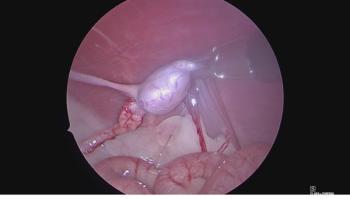According to Dr. Barletta, these inflammatory mediators can activate nociceptors that are usually silent to cause hyperalgesia (an overreaction to a painful stimulus) and allodynia (a painful reaction to a nonpainful stimulus, like touch). They also decrease the threshold for some receptors. “TRPV1 receptors are a really big deal in pain and usually have a temperature threshold of 45°C (113°F), which means you’re going to start feeling that a stimulus is really hot and painful when it’s at 42°C,” he explained. “Now that decreases to 35°C (95°F). If you’ve ever had a bad sunburn, for example, bathing in lukewarm water can feel super hot—like it’s burning your skin.”
Transduction can be prevented with local anesthetics, opioids, nonsteroidal anti-inflammatory drugs (NSAIDs), and corticosteroids. “Local anesthetics block sodium channels, which is one of the reasons why we use local blocks when performing surgery,” Dr. Barletta noted. “As for opioids, most research findings concur that we have mu receptors in the periphery, and NSAIDs and corticosteroids decrease the inflammatory response.”
Dr. Barletta said he often gets asked whether animals should always be pretreated before a stimulus is applied. His response: “Ideally, yes. We definitely provide a local anesthetic and administer opioids before that.” Whether to give NSAIDs before surgery is a common conundrum, continued Dr. Barletta. “If I want to prevent pain, I should probably give as much as I can before the stimulus, but at that point, I don’t know how the surgery and anesthesia event are going to go down,” he elaborated. “What if the patient is going to be hypotensive for most of the surgery and now maybe its kidneys aren’t well perfused, and then I’m giving an NSAID on top of that? Those kidneys won’t be very happy.”
He explained that there are two options to choose from here: “Some say you should always wait to give NSAIDs until after surgery because you never know what’s going to happen. However, I’ve seen someone spay a healthy cat in 2 minutes. The animal doesn’t even have time to develop hypotension in 2 minutes, so in this situation it’s probably OK to administer NSAIDs before surgery.” However, he continued, if you’re performing surgery on an animal that’s pretty sick, such as a dog with hemoabdomen, it’s highly likely you’ll have to deal with hypotension. So, here’s Dr. Barletta’s rule of thumb on the matter: “If the animal is young and healthy and it’s a routine procedure, I don’t have any problem administering an NSAID before surgery. If it’s a critical patient, I’m probably going to wait until postop, as long as everything goes smoothly and pressures are fine.”
Nerve fibers explained
The myelinated Aδ fibers are thick (1-5 μm in diameter) and conduct impulses at a rapid rate (5 to 30 m/sec). “They have a small receptive field and are responsible for sharp, fast, transient, localized pain,” Dr. Barletta explained. “They can be either unimodal, in which they transmit only one type of signal (either mechanical or heat), or polymodal, meaning they transmit more than one type of signal (both mechanical and heat).” Aδ fibers are predominant in the skin, which is why you can localize pain pretty well when, for example, you cut your own finger.
The unmyelinated C fibers are thinner (0.25-1.5 μm in diameter) and conduct impulses more slowly (0.5 to 2 m/sec) than Aδ fibers. “Their receptive field is larger, and they’re responsible for the slow, diffuse, burning, gnawing sensation of second pain, which persists after a noxious stimulus is terminated,” Dr. Barletta said. “All C fibers are polymodal (mechanical and heat; mechanical and cold; and mechanical, cold, and heat).” C fibers are predominant in the viscera, which is why the pain from a stomachache can be difficult to pinpoint.
“In normal circumstances,” Dr. Barletta explained, “the myelinated Aβ fibers, which have a fast conduction velocity and a diameter ranging from 5 to 15 μm, are responsible for transmitting touch and pressure. But during chronic or pathologic pain, wide dynamic range neurons become activated and cause these fibers to start conveying signals as nociception instead of proprioception.” This changeup is caused by peripheral sensitization and central sensitization (also known as windup).
Transmission
“After the nociceptors are stimulated in the periphery during transduction, the electrical signal travels to the dorsal horns of the spinal cord through the nerve fibers—Aδ, C, and (in chronic pain) Aβ fibers—via sodium, potassium, and calcium ion channels in a process called transmission,” Dr. Barletta said. “Aδ fibers synapse in lamina I-V of the spinal cord and C fibers in lamina II, which is also referred to as the substantia gelatinosa.” (See Nerve fibers explained.)
To block nociception during transmission, Dr. Barletta recommends local anesthetics, which primarily block sodium channels. “Interestingly,” he added, “alpha-2s can potentiate the local anesthetic effect, and some studies have shown that when you add dexmedetomidine to your local anesthetic it increases the duration of your local bock. Buprenorphine does the same thing.” When asked if he has a preference between dexmedetomidine and buprenorphine, Dr. Barletta explained that he prefers the former for economic reasons: “Buprenorphine is going to be more expensive. Dexmedetomidine is expensive, too, but the volume you use is very minimal, so you’re not actually spending that much money.” He does, however, make an exception if the patient is sick enough that he doesn’t think it will handle systemically administered dexmedetomidine.
Modulation
Modulation occurs in the periphery, spinal cord, and supraspinal structures. Focusing on spinal modulation, Dr. Barletta explained that the response to peripheral nociceptive stimuli can be modified in the spinal cord by the release of local endogenous modulators and the activation of descending pathways. Opioids, serotonin, and norepinephrine, for example, can decrease the response to nociception, while glutamate, substance P, and prostaglandins can increase it. And when the response to nociception is enhanced, central sensitization can occur. “This can be the result of brief but intense nociceptor activity, such as a surgeon cutting through skin, or of inflammation and nerve injury,” he continued. “Over time, repeated impulse activity of C fibers, release of a variety of neurotransmitters by the Aδ and C fibers, and activation of N-methyl-D-aspartate (NMDA) receptors can cause central sensitization resulting in enhanced responses to impulses (e.g., hyperalgesia, allodynia).”
The presence of glutamate together with the depolarization of the cell membranes (which displaces Mg++ from the channel itself) in the dorsal horns activates normally dormant NMDA receptors. “This should ring a bell here,” Dr. Barletta paused to explain, “because there’s a drug we use every day in anesthesia that’s an NMDA antagonist: ketamine. Does it help prevent chronic pain? Unfortunately, that’s a hard study to set up. How can I really show that? Using it seems to make sense, but it unfortunately doesn’t work that well when used to treat chronic pain. It’s relief is very temporary.” Another unfortunate fact is that once these NMDA receptors are open and activated, it’s really hard to shut them down. This is one of the many theories that try to explain phantom limb pain, Dr. Barletta added. “You can remove the affected limb, but in the spinal cord all of this is still active. Neurons keep going into the dorsal horn where they release neurotransmitters that activate these NMDA receptors. The signal goes to the brain, and the cortex still thinks it hurts. That’s how nasty chronic pain is.”
Dr. Barletta noted that the downregulation of GABAergic and glycine receptor activity and the activation of microglia also occur during central sensitization. “All of this mimics what happens in the periphery for peripheral sensitization,” he said. “The microglia become activated and do exactly the same thing as white blood cells in the periphery—they start releasing interleukins, tumor necrosis factor, etc.—and all of this will recruit more microglia and it will just keep going on and on and you end up with this windup, or central sensitization.”
According to Dr. Barletta, NMDA antagonists, local anesthetics, opioids, alpha-2 agonists, and NSAIDs all work in the dorsal horns. He also noted that, while not often used clinically, antidepressants and anticonvulsants are used for the purpose in research settings.
Projection and perception
“Projection,” explained Dr. Barletta, “involves the transport of the electrical signal from the spinal cord to the supraspinal structures.” Three main large tracts are involved: the spinothalamic tract (from lamina I-V to the thalamus), the spinoreticular tract (to the reticular formation and thalamus), and the spinomesencephalic tract (to the midbrain).
Once the electrical impulse reaches the cerebral cortex, it’s perceived as pain. Some of the drugs Dr. Barletta points out for blocking pain perception may seem strange, such as isoflurane and sevoflurane. “They’re not analgesic drugs,” he explained. “They act at the cortex, minimizing or stopping the perception of pain, but they’re not doing anything with nociception. That’s why if you’re anesthetized just with inhalants, I can perform surgery without you feeling anything, but nociception is still happening. So as soon as I turn the gas off and you start waking up, you’re going to be miserable.” Other drugs that work in the cerebral cortex include opioids and alpha-2 agonists.
Make it multimodal
Ultimately, pain is a multimodal problem requiring a multimodal plan for prevention and treatment. Dr. Barletta put it this way: “Multimodal analgesia is the idea. We’re trying to block, or even better prevent, these pathways at different locations and with different drugs to decrease the chance of creating chronic pain.”





